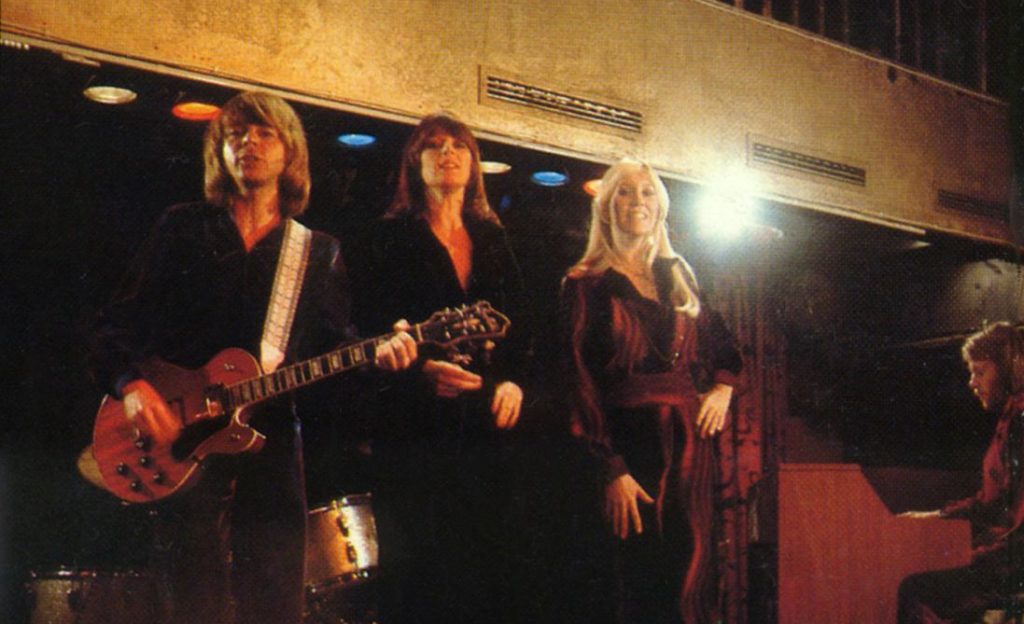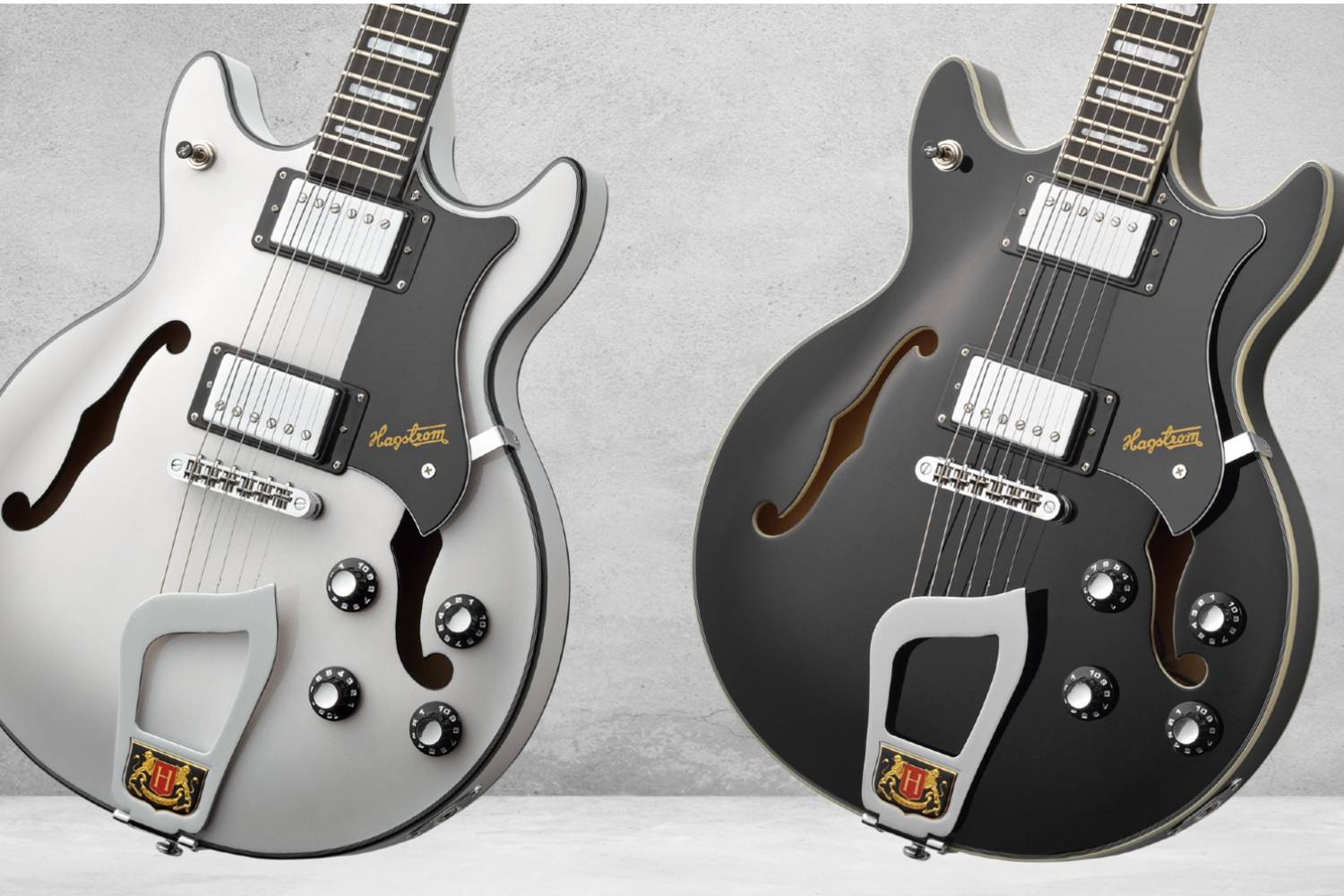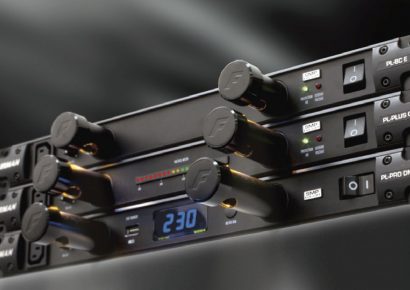A history and retrospective of Hagstrom Guitars including which guitar Hendrix used.
Hagstrom guitars may not be the first brand that comes to mind when thinking of an electric guitar–however, that may soon change. Over the past decade or so, more and more famous guitarists have been spotted playing Hagstrom guitars. Pat Smear from the Foo Fighters, Justin and Taylor York from Paramore and Kevin Parker from Tame Impala are all known to have been associated with the unique silhouette of a Hagstrom axe.
The Swedes have always been a crafty lot, historically punching well above their weight in a variety of design and manufacturing pursuits, across the board. Combine this with a national love affair with all things musical and it makes a tonne of sense how a brand like Hagstrom, the quintessential Scandavian Guitar manufacturer, were able to not only permeate, but prosper in the cut throat international guitar market, developing a stellar reputation for excellence in the space, as well as a unique sonic signature that is entirely their own.
The brand itself has its roots all the way back in 1925, when founder Albin Hagstrom first started importing accordions from Germany and Italy. Business flourished, and Hagstrom music shops began to dot the streets of Sweden, Norway and Denmark.
Read up on all the latest interviews, features and columns here.
Seven years later, Albin Hagstrom decided to take production into his own hands, establishing his new line of original accordions. He didn’t stop there either – the company founded a number of accordion schools, and it’s estimated that over 70,000 people have attended classes there.
The company began to diversify into acoustic steel string and classical guitars around the early 1940s, but it wasn’t until 1958 when the first ever Hagstrom electric guitars–the Hagstrom Deluxe and Standard models–were built.
Aesthetically, they incorporated repurposed elements from their accordion forefathers, including pearloid celluloid finishes, stamped metal logos, and of course, the liberal use of sparkles. Other noticeable features included a “Speed-O-Matic” plexiglass fretboard, and a H-bar truss rod which lowered the guitar’s action considerably.
Their excellent reception led the company to further expand their catalogue, adding semi-acoustic, jazz-focused models and refined solid-body electrics to their line-up.
In 1961, Hagstrom released their first line of electric bass guitars. This series included one of their most prominent models: the world’s first mass-produced eight-string bass guitar, the H8. Jimi Hendrix himself has been documented playing the H8 when jamming with Curtis Knight and the Squires and can be heard on the compilation album Summer of Love Sessions. 1965 saw the introduction of the Viking, Hagstrom’s first semi-hollow electric guitar. This particular model was most noticeably played by Elvis Presley during his ‘68 Comeback Special, as well as Frank and Dweezil Zappa.
The Hagstrom Swede, famously used by ABBA’s Björn Ulvaeus, was next to follow, cut from a similar cloth as the Les Paul but featuring new all-original humbuckers developed in-house.

In their home country of Sweden, Hagstrom Guitars became famous not only for their quality instruments and musical equipment, but also for their foray into music education. The company published a series of self-teaching books and mail-order courses that spanned a wide variety of instruments. The courses deliberately focused on the rising popularity of rock and pop, pushing the recognition of the electric guitar as a legitimate instrument, rather than a merely amplified acoustic guitar.
Over the course of 25 years, Hagstrom sold close to 130,000 electric guitars, which found their way all over the globe. Unfortunately, the company was forced to end production in 1983, when they were outpriced by other guitar brands that had moved their production lines to Asia. It was a silent 22 years for the company, till their inevitable relaunch in 2005.
True to tradition, Hagstrom guitars still have a knack for pushing the envelope with their idiosyncratic body shapes and wealth of distinctive characteristics. Since returning to the forefront of manufacturing and design, the spirit of innovation burns bright within the company, and it can easily be noticed within their instruments.
For instance; their (now renamed) H-Expander truss rod, which further strengthens the guitar’s neck while permitting a slinky low action. Hagstrom’s ‘Resinator’ wood fingerboards, another element seen across almost all Hagstrom guitars, is another addition to behold. ‘Resinator’ fretboards are constructed from a wood composite, which the company claims is more stable and uniform in density than any traditional wooden fingerboard.
Further proof can be found in the Retroscape series, which truly accentuates Hagstrom’s eccentric approach to the modern electric guitar. The Condor and Impala models – originally introduced in 1963 – feature the company’s intriguing switching array, housed upon a clean sheet of chrome.
This cluster of switches allow the player to choose from an unparalleled amount of tonal combinations from the three Alnico 5 Retro-S pickups onboard. Combined with its asymmetrical double cutaway body, either the Condor or Impala are an absolute dream for players looking for something out of the ordinary, with the likes of Kevin Parker and Paramore guitarists Justin and Taylor York being spotted slinging both models in the past.
And if you’re a bassist, don’t for one minute think that you’re missing out on all the action offered by Hagstrom’s new reissue range. The company also produces a number of four-string variants of its popular Swede and Viking shapes, offering thumping low-end tones and sleek aesthetics that hark back to the golden era of instrument manufacturing.
Should you wish, you can even get your hands on the same eight-string Hagstrom H8-II favoured by Hendrix himself, just in case you forgot how good company these instruments tend to keep.
In a market so heavily dominated by S and T-style shapes, Hagstrom Guitars are a much-needed breath of fresh air both in sound and in silhouette. The company is constantly redefining the norms of the guitar industry, putting forth original ideas and concepts that aim to take the electric guitar to the next level, and after nearly 100 years, they show no signs of slowing down just yet.
On top of their distinctive instruments, it’s the original vision of Albin Hagstrom that’s really being sold here—quality and innovation without exception.
To find out more about Hagstrom Guitars, get in touch with Pro Music Australia.







